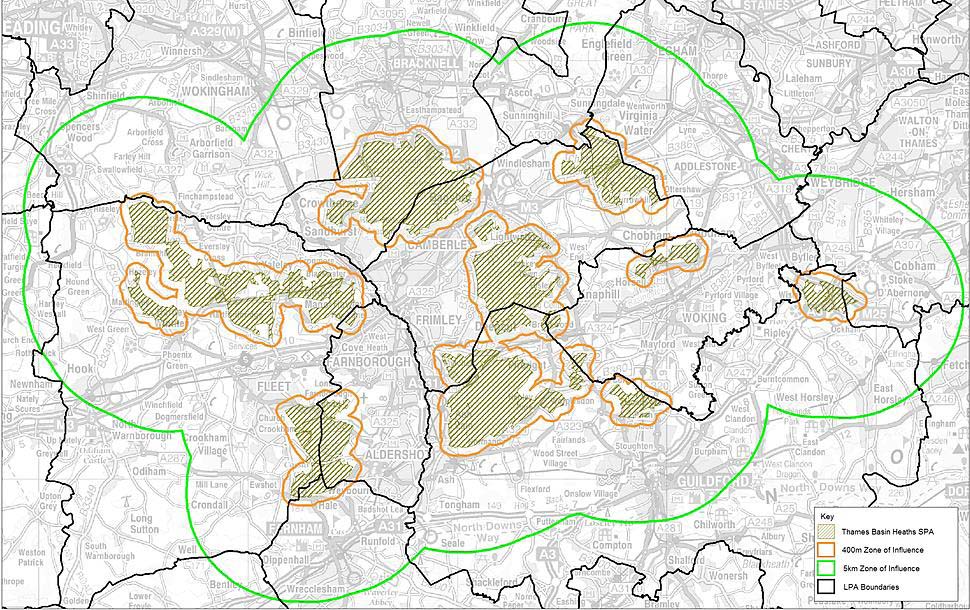SANG – Suitable Alternative Natural Green Space
The acronym SANG stands for Suitable Alternative Natural Green Space. This is an area that is aimed at protecting an SPA or Special Protection Area.
SPA – Special Protection Area
A SPA is part of a European-wide network of sites of international importance for nature conservation established under the European Community Wild Birds and Habitat directives. SPAs are classified in accordance with European Council Directive 2009/147/EC on the conservation of wild birds, known as the Birds Directive. SPAs protect rare and vulnerable birds (as listed on Annex I of the Birds Directive), and regularly occurring migratory species.
Surrounding these Areas there are buffer zones in which development is constrained to prevent damage to the SPA itself. These are the SANGs. Development is limited in these areas.

One example is the Thames Basin Heaths Special Protection Area that covers over 8,400 hectares of Sites of Special Scientific Interest (SSSI) within Berkshire, Hampshire and Surrey. This affects 15 local authorities within the 5km buffer zone around it. The SPA is designated for breeding populations of Dartford warbler, nightjar and woodlark, which are protected species under the EC Wild Birds Directive.
HRA – Habitat Regulations Assessment
Some changes of use are allowed in Special Protection Areas (SPAs). Any developments that are close to (or within) the boundary of a Special Protection Area may require a Habitat Regulations Assessment (HRA) if they are likely to have an adverse affect on the site. An initial screening stage would be required, followed by an appropriate assessment.
SAMM, CIL and S106 Costs
As a result of the SPA a levy is charged on new development in the area in each SANG. This is called SAMM or Strategic Access Management and Monitoring. These fees are in addition to any CIL** that might be payable and are calculated on the number of bedrooms. It also applies to creating HMOs where normally CIL would not normally be payable (unless new space). When doing due diligence in an area affected by SANG or SAMM it is important to calculate all the costs involved.
This charge is in addition to S106 costs and is generally non-negotiable. There is talk that CIL and indeed S106 will be replaced by a new charge set by each local authority.
** The Community Infrastructure Levy (CIL) is a planning charge, introduced by the Government through the Planning Act 2008 to provide a fair and transparent means for ensuring that development contributes to the cost of the infrastructure it will rely upon, such as schools and roads. The levy applies to most new buildings and charges are based on the size and type of new floorspace.
Hambleden works proactively throughout the development process on a performance related basis,
so there is no cost for landowners for our expert services until a successful outcome is achieved.
Phone George Newcombe on 07970 15 72 72 for a no-obligation discussion,
or email Hambleden Land – enquiries@hambleden.land